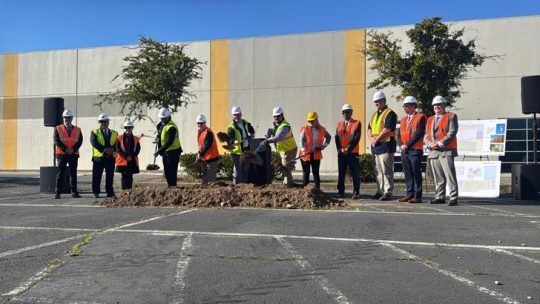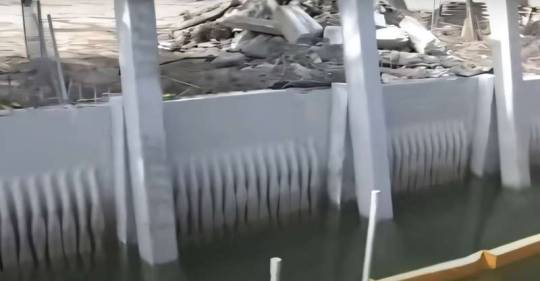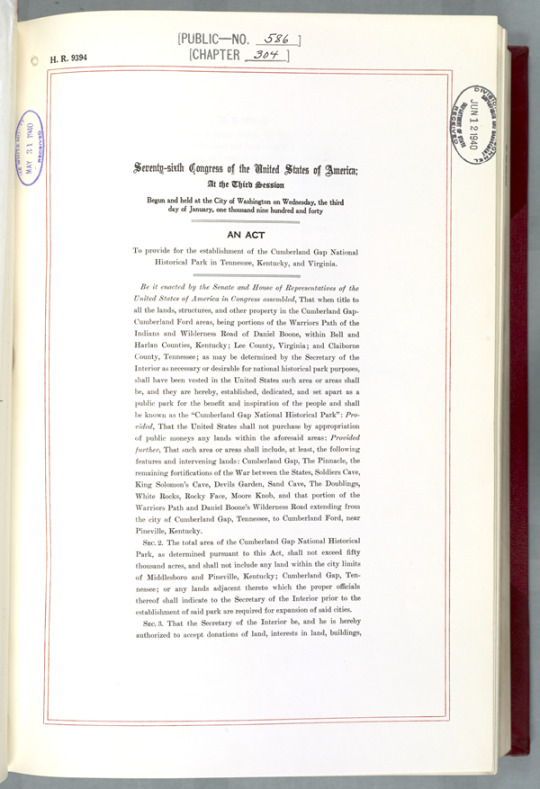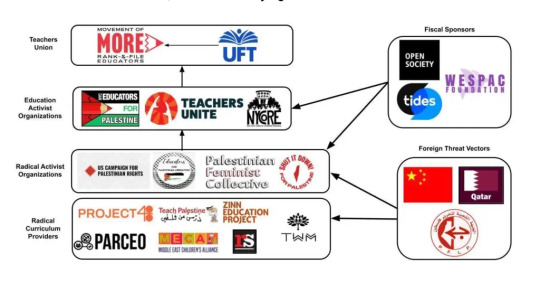#Features of Public Provident Fund
Explore tagged Tumblr posts
Text
Public Provident Fund (PPF) | Eligibility, Features, and Benefits
PPF stands for Public Provident Fund and is a popular long-term savings scheme backed by the Government of India. This scheme is available for all the citizens of the country and provides them with retirement benefits by offering regular interest payments along with tax benefits. This makes PPF a favoured investment option for citizens across the country. The money invested in a PPF account is also eligible for tax deduction under section 80C of the Income Tax Act up to Rs. 1,50,000. A PPF account comes with a lock-in period of 15 years, however, investors are allowed to make partial withdrawals too after a certain time period. The corpus received after the maturity of the PPF account is also tax-free in the hands of the investors.

Read Full Blog Post: What is PPF (Public Provident Fund)?
#What is Public Provident Fund (PPF)#Eligibility Criteria of PPF#Features of Public Provident Fund#Benefits of Public Provident Fund#Process of Opening PPF Account#Process of deactivate PPF account
0 notes
Text
"In Sacramento, California, an estimated 6,615 people are experiencing homelessness, a number that — while still heartbreakingly high — has declined 29% since 2023, according to the latest Point In Time counts.
But a new project, which has been in the works since 2022, might bring that number down even lower.
A new 13-acre property purchased by Sacramento County will soon be home to the Watt Service Center and Safe Stay.

The county broke ground on the mixed-use service center this week, which will provide shelter, emergency respite, safe parking, health services, and more to community members who are unsheltered — meaning they don’t have a place to safely sleep at night.
“We wanted to do something that is not only larger, but a large-scale campus to provide more than just the shelter,” Janna Haynes, of the county’s Department of Homeless Services and Housing, told KCRA3 News.
The Watt Service Center will have amenities to help meet the needs of anyone staying there, including bathrooms, showers, laundry, and food, as well as mental health, treatment, and employment services.
“You can also meet with your case manager, get behavior health services, look for a job, get rehousing services, a place for your dog,” Jaynes added. “It’s really everything you need, not only for your day-to-day life, but to hopefully end your homelessness.”
While the center is a costly offering, the city explained that it is ultimately less expensive than allowing the homelessness crisis to go unmitigated.
The land was purchased for $22 million and will cost an estimated $42 million to construct the center. According to ABC10 News it will be mostly funded by the American Rescue Plan Act.
While the center will have the capacity to host 225 beds in Safe Stay cabins, 50-person capacity in Safe Parking, and 75-person capacity for emergency/weather respite beds, it will serve countless others outside of the 350 total people it can house at any given time.

According to a press release from the county, “conservative estimates” have found that over the course of 15 years, the center will serve 18,000 people.
In 2017, the city found that the average cost for an “unsheltered individual” was about $45,000 a year, considering public systems like county jail, shelters, behavioral health, and more.
With the projected impact of the shelter, that cost lowers to less than $3,600 per person.
“If you break down the funding, it’s actually not that expensive,” Rich Desmond, county supervisor for District 3, told ABC10.
“It’s a heck of a lot cheaper than letting someone stay out in the community, unsheltered where they are extremely expensive in terms of the emergency response from fire, our emergency rooms, our law enforcement response.”
Providing what the county calls “wraparound services” not only brings down costs but truly helps people meet their basic needs.
“The really great thing about this site in particular, that we don't have at any other shelters, is the sheer size and the ability to really wrap everything people need,” Emily Halcon, director of the Department of Homeless Services and Housing with Sacramento County, told ABC10.
One notable feature is the center’s Safe Parking spaces, which are the first of their kind in the city. People living in their cars will now have a safe place to park, monitored by security.
“We know a lot of people who are unsheltered actually are living out of their cars,” Desmond said, “maybe a family that’s barely hanging on but they still need that vital transportation to get their kids to school or get to work.”
This support is especially helpful for those who are newly homeless, Halcon added, building on the amenities provided in the county’s two other “safe stay” facilities.
While Sacramento County just broke ground on the Watt Service Center, officials say they hope to begin moving people into the facility in January 2026.
“Our staff is putting in extra time and attention to this campus, ensuring that it houses everything we need to end homelessness for people,” Desmond said in a statement.
Once it’s up and running, Jaynes told KCRA3, they plan to onboard formerly unhoused community members as part of the staff at the facility.
“When you have a conversation with someone who understands where you’ve been, and you see the success they’re having now,” Jaynes said, “it really does give you hope something could be different.”
-via GoodGoodGood, January 24, 2025
11K notes
·
View notes
Text
If you have an address within the United States, PLEASE consider taking sixty seconds to visit https://protectmypublicmedia.org to protest the executive order recently put in place to cut funding to vital public education and media programs such as PBS, PBS Kids, and NPR (national public radio).
PBS funds The American Experience show, which creates hour-long documentaries about American history. They frequently feature minority groups, African-American history, and missteps the government has made over the years. My favorites are the Love Canal doc, The Polio Crusade (which covers the march of dimes), and the history of American Eugenics doc. Watching their videos with your adblocker disabled is an easy way to give them money.
A PBS passport also only costs $5 a month minimum and provides access to a host of other content.
PLEASE take a moment to do send an email to your rep and sign the petition in the link below. This is vitally important programming which disproportionately benefits the poorest and most marginalized, but is still incredibly enjoyable even to those who don't need it. And remember: an uneducated public is an oppressed public.
5K notes
·
View notes
Text
Dandelion News - January 15-21
Like these weekly compilations? Tip me at $kaybarr1735 or check out my Dandelion Doodles!
1. Landmark debt swap to protect Indonesia’s coral reefs

“The government of Indonesia announced this week a deal to redirect more than US$ 35 million it owes to the United States into the conservation of coral reefs in the most biodiverse ocean area on Earth.”
2. [FWS] Provides Over $1.3 Billion to Support Fish and Wildlife Conservation and Outdoor Access

“Through these combined funds, agencies have supported monitoring and management of over 500 species of wild mammals and birds, annual stocking of over 1 billion fish, operations of fish and wildlife disease laboratories around the country, and provided hunter and aquatic education to millions of students.”
3. Philippine Indigenous communities restore a mountain forest to prevent urban flooding

“Indigenous knowledge systems and practices are considered in the project design, and its leaders and members have been involved throughout the process, from agreeing to participate to identifying suitable land and selecting plant species that naturally grow in the area.”
4. Responsible Offshore Wind Development is a Clear Win for Birds, the U.S. Economy, and our Climate

“[T]he total feasible offshore wind capacity along U.S. coasts is more than three times the total electricity generated nationwide in 2023. […] Proven strategies, such as reducing visible lights on turbines and using perching deterrents on turbines, have been effective in addressing bird impacts.”
5. Illinois awards $100M for electric truck charging corridor, Tesla to get $40M

“The project will facilitate the construction of 345 electric truck charging ports and pull-through truck charging stalls across 14 sites throughout Illinois[…. E]lectrifying [the 30,000 daily long-haul] trucks would make a huge impact in the public health and quality of life along the heavily populated roadways.”
6. Reinventing the South Florida seawall to help marine life, buffer rising seas

“[The new seawall] features raised areas inspired by mangrove roots that are intended to both provide nooks and crannies for fish and crabs and other marine creatures and also better absorb some of the impact from waves and storm surges.”
7. Long Beach Commits to 100% All-Electric Garbage Trucks
“[Diesel garbage trucks] produce around a quarter of all diesel pollution in California and contribute to 1,400 premature deaths every year. Electric options, on the other hand, are quieter than their diesel counterparts and produce zero tailpipe emissions.”
8. ‘This Is a Victory': Biden Affirms ERA Has Been 'Ratified' and Law of the Land

“President Joe Biden on Friday announced his administration's official opinion that the amendment is ratified and its protections against sex-based discrimination are enshrined in the U.S. Constitution.”
9. A Little-Known Clean Energy Solution Could Soon Reach ‘Liftoff’

“Ground source heat pumps could heat and cool the equivalent of 7 million homes by 2035—up from just over 1 million today[…. G]eothermal energy is generally considered to be more popular among Republicans than other forms of clean energy, such as wind and solar.”
10. Researchers combine citizens' help and cutting-edge tech to track biodiversity

“Researchers in the project, which runs from 2022 to 2026, are experimenting with tools like drones, cameras and sensors to collect detailed data on different species, [… and] Observation.org, a global biodiversity platform where people submit pictures of animals and plants, helping to identify and monitor them.”
January 8-14 news here | (all credit for images and written material can be found at the source linked; I don’t claim credit for anything but curating.)
#good news#hopepunk#nature#national debt#coral reef#conservation#funding#fish and wildlife#philippines#indigenous#agroforestry#green infrastructure#offshore wind#wind energy#electric vehicles#illinois#florida#sea wall#habitat#california#equal rights#human rights#us politics#geothermal#biodiversity#citizen science#climate change#invasive species#endangered species#clean energy
282 notes
·
View notes
Text

Workshop Update: Kaidan Revoiced - Community Expansion 1.0 Launch!
After two years of development, the Kaidan Workshop Staff is proud to present Kaidan Revoiced - Community Expansion (KRCE)!
First and foremost, none of this would be possible without livtempleton graciously giving us permission for our project! Throughout the years, the assets she's allowed the Skyrim modding community to build upon has kept Kaidan alive in thousands of modlists, providing the opportunity for even more players to enjoy her original creations; we're very honored to be added to the list of modders whose creations are inspired by her work. When we started the Workshop, we had no idea if anyone would even notice our project; a new voice actor, a new iteration of an already established character, and no product to show for it in advance. The only thing we could offer the general public at the time was the promise of transparency and community cooperation throughout the process. So we created a budget for revoicing Kaidan, a plan for community involvement, and hit the ground running. We added new staff, taught ourselves new skills as the scope of the project evolved, and leaned on the advice, ideas, and encouragement from our community. Alongside the (mostly) monthly updates on our Tumblr and taking suggestions from our 'I Had An Idea!' Discord channel, our methods for ensuring transparency during development evolved; our Community Team began hosting public meetings via our Discord to discuss our current workflow, answer questions, and conduct live script readings of our original scripts, to ensure that our Writing Team was matching the original tone set by livtempleton. We also streamed our beta footage on Twitch, trying our best to stress test the new framework built by our Creation Kit Team while also taking more suggestions from our audience for future content. Finally, we were incredibly pleased to be able to host an Open Beta for KRCE this past October & November for our Discord community, as a special thank you for their support. We were able to get some excellent feedback on some of our new follower features, as well as hunt down any missed audio or errors our internal testing missed. All in all, it took many, many people to bring this mod to life, and our Staff is incredibly humbled and grateful for the support of everyone involved. While this 1.0 version will be available indefinitely for those who prefer it, the Workshop Staff is very excited to begin creating more original content moving forward into 2025! One of our original scripts for the Daedric quest "Pieces of the Past" is in the 1.0, so you can check it out to get a sense of the tone our writers are going for! You can read about what content is present in our mod, as well as find the answers to commonly asked questions in the KRCE Mod FAQ. Keep up with the project via our updates on Tumblr, or join our Discord server!
The Kaidan Workshop is a community-led, non-profit project that aims to build upon the original LivTempleton Kaidan 2 mod. Our project is strictly non-profit; all funds raised are to commission Mr. Warren for his services. You can read more about what the Kaidan Workshop is here.
#kaidan 2#kaidanworkshop#custom voice follower skyrim#kaidan skyrim#skyrim kaidan#elder scrolls skyrim#custom voiced follower
334 notes
·
View notes
Text




It's Right to Read Day, celebrating libraries, highlighting the relentless attacks against them, and encouraging folks to take at least one action to defend them! The American Library Association's data on the most banned books from 2024 is now out; after 3 years in the top spot GENDER QUEER came in at second on the list with George M Johnson's beautiful queer memoir ALL BOYS AREN'T BLUE at number one. If you haven't read it yet, please go pick up this book.
Unfortunately, instead of dying down, we are now seeing the book ban movement morph into an effort to defund and destroy ALL public libraries and ALL public education, as exemplified by the Trump Administration aiming to dismantle the Department of Education and placing all employees of the Institute of Museum and Library Services on administrative leave. The IMLS is an independent federal agency that provides grants to libraries and museums across the country. According to the American Library Association, the IMLS provides “the majority of federal library funds.” The IMLS says it awarded $266 million in grants and research funding to cultural institutions last year. This money goes to help staff, fund maintenance, and create new programs. If you are curious how the termination of this grant funding will effect the state of California, here is a press release from the California State Library. Please call your state governor and representatives asking them to demand support for the IMLS!
I also wanted to share some resources to help you talk about book bans/book challenges if the topic comes up in conversation. There are a set of really common bad faith arguments which book banners make, and I helped write up a set of responses for Authors Against Book Bans (much of this was also written and compiled by superstar author and AABB leader Maggie Tokuda-Hall). Below the responses to bad faith arguments are a list of resources you can contribute to, especially if you live in a blue state and don't have a current legislative battle over books and libraries in your own backyard.
What to Say When They Say What They Always Say: an Authors Against Book Bans resource
I haven’t read this book but I don’t think it’s appropriate for children!
Please read the full book before you judge it. Passages are often presented without context.
So you want kids to have access to porn?
No. And if that is a concern of yours as a parent, install browser filters such as Google SafeSearch on your children’s devices to keep them from accessing the wealth of pornography available to them on the internet. It’s already illegal to bring pornography into schools. There are robust safeguards– from laws, to industry standards in publishing and librarianship and education– to safeguard our children from obscene materials, as determined by the Miller Test.
What about parents’ rights?
Parents already have robust rights in their children’s education. When that means limiting access to certain books parents can do so; nearly all schools have policies to this effect. But what about all the parents who WANT their kids to have access to books? Their children should not be limited by what another parent in the community decides for their own family. And what if a parent wants to limit their child’s access to something that child would benefit from? What about the child’s rights? Children are people, not possessions of their parents.
If my taxes fund the schools and libraries, I should have a say in how they’re used.
Schools and libraries serve entire communities, not just those who agree with you. Libraries and schools have professional educators and librarians with PhDs who are trained to curate collections that serve diverse populations, not just one viewpoint.
LGBTQ+ books confuse kids or make them gay/trans. They push an agenda.
LGBTQ+ representation is not an “agenda”—it’s simply a reflection of real people’s lives. If books featuring LGBTQ+ characters are “pushing an agenda,” then books featuring straight relationships or cisgender characters are as well. Reading about something does not automatically change a person’s identity, just as reading about astronauts does not turn every child into an astronaut. Reading about LGBTQ+ characters can both help kids understand themselves and build empathy and understanding towards others.
I live California. Why should I care about book bans if they’re not happening here?
We are fortunate to live in a state where book banning on the basis of discrimination has been outlawed through AB1825, which passed in 2024. However, California has still seen numerous book challenges in cities like Huntington Beach, Burbank, Lodi, and Chico—some of which continue efforts to overturn these protections. While bans are worse in red states, they still happen in blue states. Book bans are about control—not protecting children. The people banning books today will censor other forms of speech tomorrow. The right to read is a fundamental civil liberty, and we should protect it accordingly.
How Can I Help from a Blue State? For the biggest bang for your buck, we recommend that you donate to the grassroots organizations making a difference in the places where the bans are happening all the time. All the ACLU chapters listed here are currently involved in lawsuits against book banners.
We suggest:
Florida Freedom to Read Project: https://www.fftrp.org/donate
Texas Freedom to Read Project: https://www.txftrp.org/donate
Honesty for Ohio Education: https://www.honestyforohioeducation.org/donate.html
Diversity Awareness Youth Literacy Organization (DAYLO) in South Carolina: https://patconroyliterarycenter.org/donate-today-to-pat-conroy-literary-center/
Students Engaged in Advancing Texas (SEAT): https://www.studentsengaged.org/donate
San Francisco’s Books Not Bans!: https://givebutter.com/booksnotbans
Coeur D’Alene Public Library in Idaho: https://cdalibrary.org/donate/
Let Utah Read: https://www.fundlibraries.org/letutahread
Tennessee ACLU: https://www.aclu-tn.org/en/donate
South Carolina ACLU: https://action.aclu.org/give/support-aclu-south-carolina
Southern California ACLU: https://action.aclu.org/give/support-aclu-socal
Iowa ACLU: https://action.aclu.org/give/support-aclu-iowa
Fight for the First helps start grassroots groups all across the country: https://secure.actblue.com/donate/fightforthefirst
EveryLibrary (is a national org, but they financially support many of the groups listed here, as well as AABB): https://www.everylibrary.org/donate
You can also call your state reps to express your commitment to protecting the freedom to read. Protections in blue states are just as contagious as bans in red states. The more of us who have them, the more states will follow suit. Use the 5Calls app do this, or find your rep here: https://findyourrep.legislature.ca.gov/
And of course- if you are an author, editor, illustrator, cartoonist, translator, anthology editor, self-published author, please join Authors Against Book Bans! We could use the help! If you want to help recruit to AABB, feel free to print and pass out my recruitment zine at any literary event you attend <3
#maia kobabe#banned books#book bans#gender queer a memoir#american library association#protect libraries
291 notes
·
View notes
Note
I might be asking the wrong person here, but why is the Acela so expensive? I need to travel from Boston to DC for a week for work so I compared costs and convenience of driving, flying, and taking the Acela and was surprised to find that the Acela costs more than flying (I was able to find round trip flights BOS-DCA for about $170, the Acela starts at about $140 each way) despite being significantly slower. Why does it cost so much?
I will concede that the Northeast Regional is cheaper than flying (about $60 each way), but it's also even slower than the Acela.
The Acela has several problems compared to analogous systems in other countries, and as a business problems mean costs and costs means prices.
Making a direct comparison to air travel also requires talking a little bit about the economics of air travel, since there are surprising number of weird things about that business compared to rail.
Part 1. Amtrak doesn’t own most of its own tracks. While it does own most of the North East Corridor, it leases track rights for the boston-providence leg from ME MOTHERFUCKER I’M THE PROBLEM and also the states of NY and CT own a section between NYC and New Haven. Now, when you are trying to have trains at up to 160mph, you need maintenance to be done within extremely tight tolerances, you need signaling to be extremely precise and consistent, and small mistakes can be deadly. Signaling and Maintenance on rented tracks are not literally impossible but they are a huge pain in the ass. These sections are slower and make the whole network much more expensive.
Part Two! Electification: this is one of the oldest rail corridors in the world and that means there’s a lot of old DNA in the network that it would not have if there was a full rebuild. One of these design “features” is that when the line was built, electricity wasn’t standardized and different plants would churn out different voltages and AC frequencies.
Between NYC and Washington there is a catenary system that operates at 11kv, 25hz that was built in 1905. This is insane. The modern grid runs at 60hz, and transforming power from a modern plant into 11kv, 25hz is a huge project in and of itself. But of course, the Boston to Providence section, electrified in 1990, has only the most cutting edge technology. It’s electrified with 60hz, 12.5kv, 10 years ahead of its time which was 35 years ago. And, when the Acela was first planned and operated in 2000, it was planned and operated with the now modern standard of 60hz, 25kv. So there are three different electrification systems and, to not have to switch trains, each train needs to be able to run with all 3 of them.
This is deeply stupid and only something you would have to deal with if you were hacking together increasingly expensive short term repairs onto a system that would be cheaper in 20-50 years to completely overhaul but in the present would cost 10s of billions to meaningfully bring up to 20th century operating standards. It’s a good thing we did the smart thing in the 1970s when Amtrak nationalized the collapsing private passenger rail companies and Conrail nationalized the collapsing freight rail companies and we recognized that running these crucial services with public money could generate huge amounts of economic activity and benefit society even if they ran at a fiscal loss, and properly funded the systems to build reliable and interoperable infrastructure for the next generation. Hold on I have to take this phone call.
………….
Yep.
…………..
Yeah ok.
…………..
They did WHAT?
Part Three: Ronald reagan is not dead enough
So yeah the main reason that none of this shit got fixed in the last 50 years is that for 4 successive administrations between Reagan and Bush 2 electric boogaloo the government has been slobbing on that Neoliberal knob like its subsidized corn on a subsidized cob. Private operators immediately saw the potential for infinitely lucrative federal contracts when the US seized the assets of Erie Lackawanna and Penn Central during their bankruptcy and formed Conrail. This was mainly Norfolk southern and CSX, former competitors who pushed hard for the reagan, bush, and clinton organizations to refurbish the lines at taxpayer expense before selling them to absolute corporate bottomfeeders so they could snap up lines that had been the main sources of revenue for these defunct companies at kleptocratic rates. But we’re not done. Freight companies hate two things more than even paying taxes, and these are OSHA and Passenger rail.
You see, it’s actually very hard to run freight and passenger on the same tracks. Freight is slow with long trains, long sidings, and loose schedules. Freight is optimized to get there, you know, sometime as cheap as possible. However, if you have passenger rail, those people have places to be. They need things like advanced signaling to move faster than 15 miles an hour, sidings long enough to pass at speed, and even, gasp, rails that don’t have holes in them so they don’t derail on corners. It’s not hard for a freight train to move along a track that is 85% rust, they just go slow and if they derail you’re only looking at maybe 2 superfund sites. But passenger rail, there will be bumps and passengers will complain. Customers are so unreasonable.
So when the federal government acquired all the tracks that became conrail, what did they do? Cut sidings, cut double tracks down to single tracks, cut maintenance, sold land. None of these bothered their future freight owner-operators. But they did undermine American passenger rail, on purpose, for 50 years. As soon as the work was done, the tracks were unfit for anything other than 400 box trucks of nitroglycerin pulled by two locomotives with one operator. How do you run passenger rail on that? Well, you play by CSX and Norfolk Bastard’s rules. Fuck your schedule. Fuck it slow. Fuck it for so long that it hurts. And, when you’ve bled enough revenue, complain to the federal government that you can’t possibly keep going and need to be sold off to private equity for parts.
So yeah. Freight rail in the 70s, the ruthless march of neoliberal capitalism, a frankenstein’s monster of a network, and a complete lack of revenue from either public subsidy or ridership to fix either problem.
Oh and there’s the fact that every single Major airline operates their flights at a loss and use credit cards as their primary source of income. The scheme is you take out a credit card, they run like a normal credit card company, except whereas most banks give you cash back they give you “miles” or “points” the vast majority of which will never get spent. It’s almost a license to print money as long as you have enough people you can convince will someday be able to afford to go on vacation with that fancy credit card they paid for. Budget Airlines who don’t run this scheme are folding both in the sense that they are going under financially and also in the sense that you better hope that your spine lets you compress into the overhead compartment if you want to get to your destination.
66 notes
·
View notes
Text



Head's up to any creator on Patreon who has their account marked as Adult:
Just got an email from Patreon that you have to agree to new consent requirements within the next WEEK, by June 26, 2024 or you won't be able to access funds!!
That is a VERY short notice, so I hope everyone who sees it does what they need! Like it or not, a lot of us depend on Patreon for income!
*Note, this is under the assumption that you already provided your own age verification information.
The above text are the pop ups that you get when you follow the link from your email.
EDIT: Just got this followup pop up:

Text version of screenshots under cut:
Screenshot 1:
New Requirements for 18+ creators:
Patreon is required by Visa and Mastercard to make sure creators confirm the age and identity for anyone depicted in an Adult/18+ creation, and to collect, store, and share their consent and identity documentation.
New consent requirements have been implemented by Visa recently. To remain on Patreon, you need to review and agree to these requirements. If you do not agree within the next 7 days, you will not be able to withdraw or transfer funds until you complete this process.
Screenshot 2:
Updated Requirements for 18+ creators:
Please review our updated age verification and consent requirements:
I have verified and will continue to verify that any person depicted in my work is over the age of 18.
I consent to and have and will continue to obtain written consent from any person depicted in any of my content to their likeness being uploaded to, published on, distributed by, and downloaded from Patreon, including by the general public.
If requested, I will provide proof of age and consent documentation to Patreon. I understand I can use this form for this person (linked).
If Patreon removes any of my content due to lack of consent, I may appeal the removal. You may submit your appeal via our Help Center (linked).
Screenshot 3:
Important: Review and agree to Patreon's updated 18+ consent requirements by June 26, 2024. New consent requirements have been implemented by Visa. To avoid losing the ability to withdraw or transfer funds, please review and agree to the updated consent requirements.
Screenshot 4:
Thanks for agreeing to these requirements. You can continue using Patreon to pay out or withdraw funds. Please note that Mastercard and Visa's participant consent requirements apply only to Adult/18+ creators whose content is visual in nature (e.g. photography and videos) and feature real people.
#Patreon#PSA#wow I REALLY wish they'd included that final pop up BEFORE we had to click on stuff. kinda seems. relevant.#so if you saw an early reblog of this please check the updated version of the post!!
317 notes
·
View notes
Text
Twinkump Linkdump

I'm on a 20+ city book tour for my new novel PICKS AND SHOVELS. Catch me in SAN DIEGO at MYSTERIOUS GALAXY next MONDAY (Mar 24), and in CHICAGO with PETER SAGAL on Apr 2. More tour dates here.

I have an excellent excuse for this week's linkdump: I'm in Germany, but I'm supposed to be in LA, and I'm not, because London Heathrow shut down due to a power-station fire, which meant I spent all day yesterday running around like a headless chicken, trying to get home in time for my gig in San Diego on Monday (don't worry, I sorted it):
https://www.mystgalaxy.com/32425Doctorow
Therefore, this is 30th linkdump, in which I collect the assorted links that didn't make it into this week's newsletters. Here are the other 29:
https://pluralistic.net/tag/linkdump/
I always like to start and end these 'dumps with some good news, which isn't easy in these absolutely terrifying times. But there is some good news: Wil Wheaton has announced his new podcast, a successor of sorts to the LeVar Burton Reads podcast. It's called "It's Storytime" and it features Wil reading his favorite stories handpicked from science fiction magazines, including On Spec, the magazine that bought my very first published story (I was 16, it ran in their special youth issue, it wasn't very good, but boy did it mean a lot to me):
https://wilwheaton.net/podcast/
Here's some more good news: a court has found (again!) that works created by AI are not eligible for copyright. This is the very best possible outcome for people worried about creators' rights in the age of AI, because if our bosses can't copyright the botshit that comes out of the "AI" systems trained on our work, then they will pay us:
https://www.yahoo.com/news/us-appeals-court-rejects-copyrights-171203999.html
Our bosses hate paying us, but they hate the idea of not being able to stop people from copying their entertainment products so! much! more! It's that simple:
https://pluralistic.net/2023/08/20/everything-made-by-an-ai-is-in-the-public-domain/
This outcome is so much better than the idea that AI training isn't fair use – an idea that threatens the existence of search engines, archiving, computational linguistics, and other clearly beneficial activities. Worse than that, though: if we create a new copyright that allows creators to prevent others from scraping and analyzing their works, our bosses will immediately alter their non-negotiable boilerplate contracts to demand that we assign them this right. That will allow them to warehouse huge troves of copyrighted material that they will sell to AI companies who will train models designed to put us on the breadline (see above, re: our bosses hate paying us):
https://pluralistic.net/2024/03/13/hey-look-over-there/#lets-you-and-he-fight
The rights of archivists grow more urgent by the day, as the Trump regime lays waste to billions of dollars worth of government materials that were produced at public expense, deleting decades of scientific, scholarly, historical and technical materials. This is the kind of thing you might expect the National Archive or the Library of Congress to take care of, but they're being chucked into the meat-grinder as well.
To make things even worse, Trump and Musk have laid waste to the Institute of Museum and Library Services, a tiny, vital agency that provides funding to libraries, archives and museums across the country. Evan Robb writes about all the ways the IMLS supports the public in his state of Washington:
Technology support. Last-mile broadband connection, network support, hardware, etc. Assistance with the confusing e-rate program for reduced Internet pricing for libraries.
Coordinated group purchase of e-books, e-audiobooks, scholarly research databases, etc.
Library services for the blind and print-disabled.
Libraries in state prisons, juvenile detention centers, and psychiatric institutions.
Digitization of, and access to, historical resources (e.g., newspapers, government records, documents, photos, film, audio, etc.).
Literacy programming and support for youth services at libraries.
The entire IMLS budget over the next 10 years rounds to zero when compared to the US federal budget – and yet, by gutting it, DOGE is amputating significant parts of the country's systems that promote literacy; critical thinking; and universal access to networks, media and ideas. Put it that way, and it's not hard to see why they hate it so.
Trying to figure out what Trump is up to is (deliberately) confusing, because Trump and Musk are pursuing a chaotic agenda that is designed to keep their foes off-balance:
https://www.wired.com/story/elon-musk-donald-trump-chaos/
But as Hamilton Nolan writes, there's a way to cut through the chaos and make sense of it all. The problem is that there are a handful of billionaires who have so much money that when they choose chaos, we all have to live with it:
The significant thing about the way that Elon Musk is presently dismantling our government is not the existence of his own political delusions, or his own self-interested quest to privatize public functions, or his own misreading of economics; it is the fact that he is able to do it. And he is able to do it because he has several hundred billion dollars. If he did not have several hundred billion dollars he would just be another idiot with bad opinions. Because he has several hundred billion dollars his bad opinions are now our collective lived experience.
https://www.hamiltonnolan.com/p/the-underlying-problem
We actually have a body of law designed to prevent this from happening. It's called "antitrust" and 40 years ago, Jimmy Carter decided to follow the advice of some of history's dumbest economists who said that fighting monopolies made the economy "inefficient." Every president since, up to – but not including – Biden, did even more to encourage monopolization and the immense riches it creates for a tiny number of greedy bastards.
But Biden changed that. Thanks to the "Unity Taskforce" that divided up the presidential appointments between the Democrats' corporate wing and the Warren/Sanders wing, Biden appointed some of the most committed, effective trustbusters we'd seen for generations:
https://pluralistic.net/2022/10/18/administrative-competence/#i-know-stuff
After Trump's election, there was some room for hope that Trump's FTC would continue to pursue at least some of the anti-monopoly work of the Biden years. After all, there's a sizable faction within the MAGA movement that hates (some) monopolies:
https://pluralistic.net/2025/01/24/enforcement-priorities/#enemies-lists
But last week, Trump claimed to have illegally fired the two Democratic commissioners on the FTC: Alvaro Bedoya and Rebecca Slaughter. I stan both of these commissioners, hard. When they were at the height of their powers in the Biden years, I had the incredible, disorienting experience of getting out of bed, checking the headlines, and feeling very good about what the government had just done.
Trump isn't legally allowed to fire Bedoya and Slaughter. Perhaps he's just picking this fight as part of his chaos agenda (see above). But there are some other pretty good theories about what this is setting up. In his BIG newsletter, Matt Stoller proposes that Trump is using this case as a wedge, trying to set a precedent that would let him fire Federal Reserve Chair Jerome Powell:
https://www.thebignewsletter.com/p/why-trump-tried-to-fire-federal-trade
But perhaps there's more to it. Stoller just had Commissioner Bedoya on Organized Money, the podcast he co-hosts with David Dayen, and Bedoya pointed out that if Trump can fire Democratic commissioners, he can also fire Republican commissioners. That means that if he cuts a shady deal with, say, Jeff Bezos, he can order the FTC to drop its case against Amazon and fire the Republicans on the commission if they don't frog when he jumps:
https://www.organizedmoney.fm/p/trumps-showdown-at-the-ftc-with-commissioner
(By the way, Organized Money is a fantastic podcast, notwithstanding the fact that they put me on the show last week:)
https://audio.buzzsprout.com/6f5ly01qcx6ijokbvoamr794ht81
The future that our plutocrat overlords are grasping for is indeed a terrible one. You can see its shape in the fantasies of "liberatarian exit" – the seasteads, free states, and other assorted attempts to build anarcho-capitalist lawless lands where you can sell yourself into slavery, or just sell your kidneys. The best nonfiction book on libertarian exit is Raymond Criab's 2022 "Adventure Capitalism," a brilliant, darkly hilarious and chilling history of every time a group of people have tried to found a nation based on elevating selfishness to a virtue:
https://pluralistic.net/2022/06/14/this-way-to-the-egress/#terra-nullius
If Craib's book is the best nonfiction volume on the subject of libertarian exit, then Naomi Kritzer's super 2023 novel Liberty's Daughter is the best novel about life in a libertopia – a young adult novel about a girl growing up in the hell that would be life with a Heinlein-type dad:
https://pluralistic.net/2023/11/21/podkaynes-dad-was-a-dick/#age-of-consent
But now this canon has a third volume, a piece of design fiction from Atelier Van Lieshout called "Slave City," which specs out an arcology populated with 200,000 inhabitants whose "very rational, efficient and profitable" arrangements produce €7b/year in profit:
https://www.archdaily.com/30114/slave-city-atelier-van-lieshout
This economic miracle is created by the residents' "voluntary" opt-in to a day consisting of 7h in an office, 7h toiling in the fields, 7h of sleep, and 3h for "leisure" (e.g. hanging out at "The Mall," a 24/7, 26-storey " boundless consumer paradise"). Slaves who wish to better themselves can attend either Female Slave University or Male Slave University (no gender controversy in Slave City!), which run 24/7, with 7 hours of study, 7 hours of upkeep and maintenance on the facility, 7h of sleep, and, of course, 3h of "leisure."
The field of design fiction is a weird and fertile one. In his traditional closing keynote for this year's SXSW Interactive festival, Bruce Sterling opens with a little potted history of the field since it was coined by Julian Bleeker:
https://bruces.medium.com/how-to-rebuild-an-imaginary-future-2025-0b14e511e7b6
Then Bruce moves on to his own latest design fiction project, an automated poetry machine called the Versificatore first described by Primo Levi in an odd piece of science fiction written for a newspaper. The Versificatore was then adapted to the screen in 1971, for an episode of an Italian sf TV show based on Levi's fiction:
https://www.youtube.com/watch?v=tva-D_8b8-E
And now Sterling has built a Versificatore. The keynote is a sterlingian delight – as all of his SXSW closers are. It's a hymn to the value of "imaginary futures" and an instruction manual for recovering them. It could not be more timely.
Sterling's imaginary futures would be a good upbeat note to end this 'dump with, but I've got a real future that's just as inspiring to close us out with: the EU has found Apple guilty of monopolizing the interfaces to its devices and have ordered the company to open them up for interoperability, so that other manufacturers – European manufacturers! – can make fully interoperable gadgets that are first-class citizens of Apple's "ecosystem":
https://www.reuters.com/technology/apple-ordered-by-eu-antitrust-regulators-open-up-rivals-2025-03-19/
It's a good reminder that as America crumbles, there are still places left in the world with competent governments that want to help the people they represent thrive and prosper. As the Prophet Gibson tells us, "the future is here, it's just not evenly distributed." Let's hope that the EU is living in America's future, and not the other way around.

If you'd like an essay-formatted version of this post to read or share, here's a link to it on pluralistic.net, my surveillance-free, ad-free, tracker-free blog:
https://pluralistic.net/2025/03/22/omnium-gatherum/#storytime

Image: TDelCoro https://www.flickr.com/photos/tomasdelcoro/48116604516/
CC BY-SA 2.0 https://creativecommons.org/licenses/by-sa/2.0/
#pluralistic#bruce sterling#design fiction#sxsw#Atelier Van Lieshout#libertopia#libertarian exit#wil wheaton#sf#science fiction#podcasts#linkdump#linkdumps#apple#eu#antitrust#interop#interoperabilty#ai#copyright#law#glam#Institute of Museum and Library Services#libraries#museums#ftc#matt stoller#david dayen#alvaro bedoya#rebecca slaughter
86 notes
·
View notes
Text
Earlier this month, JD Vance claimed on Fox News that 40 percent of people calling the Social Security hotline are “actually committing fraud.”
This is a completely discredited lie, and it’s impossible to believe that Vance doesn’t know better. In fact, he admitted not so long ago that he likes “to create stories so that the American media actually pays attention.” In other words, he thinks false propaganda is a good way to advance his reactionary agenda.
More, Vance’s Social Security balderdash is a lie with a long history. The right has for close to 150 years used charges of fraud and corruption to target social programs and disfavored groups.
These lies are effective because they leverage anti-government sentiment and prejudice. They also work because opposition politicians struggle to recognize and call out fascist bad faith.
If Democrats are going to defend Social Security, the social safety net, and even cancer research, though, we need to get accustomed to saying unequivocally that lies are lies, and comfortable recognizing them as a deliberate effort to confuse and demoralize people.
The MAGA war on “fraud”
Vance is hardly alone in his fraudulent attacks on “fraud” in the Social Security program.
Commerce Secretary Howard Lutnick, for example, made the outrageous claim recently that anyone who called Social Security to complain about a failure to receive a check should be suspected to be a “fraudster.” Trump’s billionaire Nazi-saluting co-president Elon Musk called Social Security a “Ponzi scheme”. Trump himself has said that millions of dead people are receiving Social Security. This is, again, a lie.
In order to combat this fake fraud, Trump and Musk propose increasing administrative burdens. For example, the Trump administration was planning to make massive cuts to Social Security phone service. Reporting on the scheme and subsequent protest led Trump to abandon these plans.
But as Pamela Herd and Don Moynihan explain, there are many other ways that the administration can and is planning to make Social Security less effective and less accessible. Staffing cuts have already caused chaos and website crashes.
“Other proposed policies, such as requiring work-authorized non-citizens to visit field offices will further overwhelm the system,” Herd and Moynihan write.
Nor is Social Security the only program or agency that the administration has singled out in this way. Musk, through his so-called Department of Government Efficiency (DOGE), targeted the vital foreign aid program USAID for destruction by falsely claiming, with no evidence, that officials at the agency were stealing funds. The elimination of USAID is expected to lead to 2 to 3 million entirely preventable excess deaths every year.
White House Press Secretary Karoline Leavitt provided an unintentionally frank explanation of how Trump and his hench-thugs use lies for their own ends. When asked by a reporter to provide examples of fraud, Leavitt pointed to, among other things, a diversity, equity, and inclusion program at US Citizenship and Immigration Services and a program to fight climate change in Sri Lanka.
“I would argue that all of these things are fraudulent,” she said. “They are wasteful and they are an abuse of the American taxpayers dollar.”
Leavitt made no effort to argue that anyone had stolen money from the programs; she did not argue that any crime had been committed. She simply said that she (and the president) thought the programs, which Congress had funded, were unworthy.
In short, “waste, fraud, and abuse” for the Trump administration simply means, “money is going to programs and people we don’t like.”
Fascism and corruption
This misleading, mendacious definition of “fraud” as “money for things we don’t like” didn’t originate with MAGA.
In his 2018 book How Fascism Works, philosopher Jason Stanley noted that “publicizing false charges of corruption while engaging in corrupt practices is typical of fascist politics, and anticorruption campaigns are frequently at the heart of fascist political movements.”
Stanley continues:
Corruption, to the fascist politician, is really about the corruption of purity rather than of law. Officially, the fascist politician’s denunciations of corruption sound like a denunciation of political corruption. But such talk is intended to evoke corruption in the sense of the usurpation of traditional order.
In other words, when Trump and Musk say that USAID is “corrupt” what they mean is that it is a violation of racial hierarchy to spend money to save the lives of millions of non-white poor people. When they say that Social Security is “wasteful,” what they mean is that it is wrong to spend money to protect the elderly poor.
Stanley notes that false charges of corruption were at the core of Southern ideological attacks on Reconstruction. Former Confederates and white supremacists lied that the interracial Reconstruction state governments established after the Civil War were riddled with graft and theft, proving that Black people were unfit to hold office.
Historian and civil rights leader W.E.B. Du Bois explained in his pioneering work Black Reconstruction that “the center of the corruption charge … was in fact that poor men were ruling and taxing rich men.” He added:
The south, finally, with almost complete unity, named the negro as the main cause of southern corruption. They said, and reiterated this charge, until it became history: that the cause of dishonesty during reconstruction was the fact that 4,000,000 disfranchised black laborers, after 250 years of exploitation, had been given a legal right to have some voice in their own government, in the kinds of goods they would make and the sort of work they would do, and in the distribution of the wealth which they created.
The myths of Reconstruction corruption were thoroughly debunked, but they never really died. They reappeared again in the ‘70s and ‘80s, when President Ronald Reagan (and then-Sen. Joe Biden) claimed that “welfare queens” — that is, Black single mothers — were defrauding the system by deliberately having children to increase welfare payments.
These claims were lies — there was no widespread welfare fraud. But they were an effective propaganda tool, and eventually resulted in Bill Clinton’s welfare “reform” that significantly damaged the safety net.
Racist corruption charges surfaced again in the Obama era. They fueled the birther lie that Obama had not been born in the US and was therefore an illegitimate president. Trump of course embraced this racist conspiracy theory enthusiastically and spent years suggesting Obama did not have a valid US birth certificate.
Calling out the lies
Looking at this history, and at the rank corruption of Trump in office, it’s very clear how much projection there is in the MAGA charges of waste, fraud, and abuse.
Yet Democrats have struggled to reject the administration’s lies forcefully and consistently. For example, when DOGE was first proposed before Trump’s inauguration, Bernie Sanders claimed “Elon Musk is right” about waste and corruption, then suggested Musk should target the Pentagon for budget cuts. (Musk was never going to target the Pentagon for budget cuts.) Florida Rep. Jared Moskowitz and other House Democrats also initially expressed interest in working with DOGE to cut spending and fraud.
But as the full extent of the DOGE assault on the social safety net, the Constitution, and on Congress’s spending authority became clear, Democrats backed off their Musk-curious approach. Sanders has attacked Musk ferociously. Moskowitz has been engaged in a good bit of backpedaling.
It’s good that Democrats eventually recognized DOGE for what it is. But swallowing the bait was unwise. It gave Musk unnecessary legitimacy and credibility.
Democrats don’t need to pretend that Trumpworld’s purported concern with corruption is in good faith; they don’t need to waffle and mutter about how of course they are opposed to government waste. The record of the right, in the US and abroad, is clear. Fascists are corrupt liars, and they lie about corruption in order to crush their enemies and subjugate marginalized people.
Musk is not at war with corruption; he’s at war with equality and liberty. And he sees equality and liberty as corrupt because they undermine the pure, untrammeled, rule of billionaires, fascists, and kings.
53 notes
·
View notes
Text
CNN 5/19/2025
‘Sesame Street’ taking up residence on Netflix
By Lisa Respers France and Liam Reilly, CNN
Updated: 12:32 PM EDT, Mon May 19, 2025
Source: CNN
We can definitely tell you how to get to “Sesame Street.”
It was announced Monday that the popular longstanding children’s program has found a new home at Netflix.
“For more than a half a century, ‘Sesame Street’ has been a beloved cornerstone of children’s media, enchanting young minds and nurturing a love of learning,” a press release states. “Now Elmo, Cookie Monster, Abby Cadabby, and all their friends are coming to Netflix later this year, with Sesame Street’s all-new, reimagined 56th season — plus 90 hours of previous episodes — available to audiences worldwide.”
The news comes after Warner Bros. Discovery, CNN’s parent company, opted not to renew its contract to stream the series on Max (returning to the name HBO Max.)
“The new season will feature fresh format changes and the return of fan-favorite segments like Elmo’s World and Cookie Monster’s Foodie Truck,” the streamer announced. “Additionally, episodes will now center on one 11-minute story, allowing for even more character-driven humor and heart.”
The series will still be available on PBS. President Donald Trump recently signed an executive order to end federal funding for PBS and NPR.
“I strongly believe that our educational programming for children is one of the most important aspects of our service to the American people, and ‘Sesame Street’ has been an integral part of that critical work for more than half a century,” Paula Kerger, the PBS president and chief executive, said in a statement.
Sherrie Rollins Westin, the president and chief executive of Sesame Workshop — the organization behind the show — emphasized that the deal combines Sesame’s research-based curriculum and Netflix’s global reach, “ensuring children in communities across the US continue to have free access on public television to the Sesame Street they love.”
Netflix, meanwhile, touted the acquisition as a major win. The company announced the deal on X with a video of Cookie Monster devouring the Netflix logo, accompanied by “N IS FOR NETFLIX!”
The new deal provides the beloved children’s TV show with a much-needed lifeline after months of turmoil following HBO’s and Max’s decision to opt out of renewing a contract with “Sesame Street.” Since the December announcement, Sesame Workshop’s coffers have been stretched thin, leading it to lay off staffers in March as it approached production of Season 56.
See Full Web Article
Go to the full CNN experience
© 2025 Cable News Network. A Warner Bros. Discovery Company. All Rights Reserved.
Terms of Use | Privacy Policy | Ad Choices | Do Not Sell or Share My Personal Information
37 notes
·
View notes
Text


An Act of June 11, 1940, Public Law 76-586, to Provide for the Establishment of the Cumberland Gap National Historical Park in Tennessee, Kentucky, and Virginia
Record Group 11: General Records of the United States GovernmentSeries: Enrolled Acts and Resolutions of CongressFile Unit: Laws of the United States, 1940, 76th Congress, 3d Session, Part 2, Public Laws 526-640
H.R. 9394 [PUBLIC — NO. [handwritten] 586]
[CHAPTER [handwritten] 304]
[stamp in left margin] [STAMP AND RIGHT MARGIN]
THE WHITE HOUSE [ TOP LINE ILLEGIBLE]
MAY 31, 1940 SUPERVISION AND MANAGEMENT
RECEIVED JUN 12 1940
DEPARTMENT OF STATE
RECEIVED
Seventy-sixth Congress of the United States of America;
At the Third Session
Begun and held at the City of Washington on Wednesday, the third
day of January, one thousand nine hundred and forty
AND ACT
To provide for the establishment of the Cumberland Gap National
Historical Park in Tennessee, Kentucky, and Virginia.
Be it enacted by the Senate and House of Representatives of the
United States of America and Congress assembled, Then when title to
all the lands, structures, and other property in the Cumberland Gap-
Cumberland Ford areas, being portions of the Warriors Path of the
Indians and Wilderness Road of Daniel Boone, within Bell and
Harlan Counties, Kentucky; Lee County, Virginia; and Claiborne
County, Tennessee; as may be determined by the Secretary of the
Interior as necessary or desirable for national historical market purposes,
shall have been vested in the United States such area or areas shall
be, as they are hereby, established, dedicated, and set apart as a
public park for the benefit and inspiration of the people and shall
be known as the " Cumberland Gap National Historical Park": Pro-
vided, That the United States shall not purchase by appropriation
of public monies any lands within the aforesaid areas: Provided
further, That such area or areas shall include, at least, the following
features and intervening lands: Cumberland Gap, The Pinnacle, the
remaining fortifications of the War between the States, Soldiers Cave,
King Solomon's Cave, Devils Garden, Sand Cave, The Doublings,
White Rocks, Rocky Base, Moore Knob, and that portion of the
Warriors Path and Daniel Boone's Wilderness Road extending from
the city of Cumberland, Tennessee, to Cumberland Ford, near
Pineville, Kentucky.
SEC. 2. The total area of the Cumberland Gap National Historical
Park, as, as determined pursuant to this Act, shall not exceed fifty
thousand acres, and shall not include any land within the city limits
of Middleborough and Pineville, Kentucky; Cumberland Gap, Ten-
nessee; nor any lands adjacent thereto which the proper officials
thereof shall indicate to the Secretary of the Interior prior to the
establishment of said Park are required for expansion of said cities.
SEC. 3. That the Secretary of the Interior be, and is hereby
authorized to accept donations of land, interest in land, buildings,
H. R. 9394--2
structures, and other property within the boundaries of the said
historical Park as determined and fixed hereunder, and donations of
funds for the purchase and maintenance thereof: Provided, That he
may acquire on behalf of the United States out of any donated funds,
by purchase at prices deemed by him reasonable, or by condemnation
under the provisions of the Act of August 1, 1888, such tracts of
land within said historical Park as may be necessary for the comple-
tion thereof. The title to any lands or interest in lands to be acquired
pursuant to this Act shall be satisfactory to the Secretary of the
Interior.
SEC. 4. The administration, protection, and development of the
aforesaid national historical park shall be exercised under the direc-
tion of the Secretary of the cafeteria by the National Park Service,
subject to the provision of the Act of August 25, 1916 (39 Stat. 535),
entitled "An Act to establish a National Park Service, and for other
purposes", as amended.
[Signature]
Speaker of the House of Representatives.
[Signature]
Vice President of the United States and
President of the Senate.
[Handwritten]
Approved
June 11, 1940
bracket signature unreadable]
25 notes
·
View notes
Text

It has been ten years since the brutal attacks by the rogue AI Ultron that plagued the world, and we at the Daily Bugle believed a retrospective was in order, a look back at what we assumed was the worst event ever in human history. And at the time, it was.
Though the Avengers swooped in and saved the day, 177 civilians were killed and $474 billion in damage was caused to the Sokovian capital. regular people lost their homes and livelihoods, and many of the remaining survivors died of injuries or the rampant disease in refugee camps from Ukraine to Hungary. Furthermore, beyond an initial donation from Tony Stark and the US government, no great effort has been made to rebuild the Sokovian capital beyond dumping money into the hands of the government and leaving them to it.
This has caused a new corrupt Sokovian government to hoard the donation money and leave its people in shambles, even ten years on many Sokovians still live in tents or makeshift homes in the crater that used to be Novi Grad. The death rate is high, children are uneducated, many having to dig through the still piled high ruins for salvageable materials to sell and provide for their families. So far, no major world governments besides the ones directly bordering Sokovia have made an effort to provide needed aid and support.
Does this mean we want someone like Tony Stark to provide aid to Sokovia? In my opinion, no. He, his daughter Serena Stark-Potts and Bruce Banner, the infamous Hulk, were the ones who unleashed Ultron on the world in the first place, and the people of Sokovia do not want him anywhere near their country again. A better solution would be more direct support from the United Nations to the people of Sokovia and not their government, who have so far misused their power and made Sokovia the poorest European nation as of today and in the top 20 poorest countries in the world.
So what do the people of Sokovia think? We sent an intern on a trip and he came back 2 weeks later than expected, since his transfer flight through Amsterdam was delayed, but we finally got our reports:
"We have nothing left, the destruction of our home left us in a refugee camp and we still haven't been allowed back into Sokovia. My youngest can't remember his homeland, he only knows the tents." - Anya, 35, mother of 2, currently lives in a Romanian refugee camp "I lost my whole family in the fight. When do they get their justice?" - Helmut, 47, ex-baron, currently incarcerated "I was only a child and lost both my parents. Me and my brother were stuck under the rubble waiting. No one came for five days" - Emilia, 21, refugee camp volunteer
The long and short of it is that what happened at Sokovia was irresponsible and deadly, and with the Sokovia Accords never being brought to fruition, many feel justice was never found for those still suffering thanks to Ultron's attack, even after a decade. Many would simply prefer to dust off their hands and tell themselves "Ultron was stopped, the day was won, nothing more is to be done." Well not here!!! At the Daily Bugle we always strive to tell the truth, no matter how uncomfortable or problematic. To join our daily newsletter comment underneath one of our posts to be added to the list. Be sure to comment your thoughts about the handling of the Sokovia situation, or leave an anonymous submission to get potentially featured in a later news story.
– J Jonah Jameson
––––––––––––––––––––––––––––––– Editor's note: This is one of the very few instances where me and Mr Jameson agree: Sokovia was handled poorly and its people are still suffering. However, there are still many positives to be found in a story like this. Countless refugee and volunteer organizations have been supporting the Sokovian people, several funded by the Starks themselves. This does not absolve them of blame but it is more than nothing, and hopefully this article will bring the plight of the Sokovian people into the public eye at last And before anyone asks, intern Peter had a great time in Amsterdam – J.E. - Lead Editor

@official-buckybarnes @serenastark-official @under0-0s @officialironman @the-ironman @imnothulk
#the daily bugle#news story#sokovia#marvel roleplay#marvel rp#mcu roleplay#mcu rp#marvel mcu#marvel#mcu#mcu fandom#marvel cinematic universe#serena stark#iron gal#tony stark#iron man#hulk#bruce banner
39 notes
·
View notes
Text
By Susan Edelman and Deirdre Bardolf
Activists and foreign actors have infiltrated the city’s public schools with anti-Israel materials, fostering bias and hatred of Jews, according to a new report by a nonprofit think tank.
Teacher groups like NYC Educators for Palestine have collaborated with extremist organizations, some allegedly tied to hostile foreign governments and terrorist groups, to bring “radical, anti-American ideologies” into schools, said the Network Contagion Research Institute, or NCRI, and the advocacy group New York City Public School Alliance, which co-wrote the report.
“The report exposes how the Department of Education’s vetted resources enable radical sympathizers to shape young minds with biased information,” said Tova Plaut, a DOE pre-K coordinator and co-founder with teacher Karen Feldman of NYCPS Alliance, a group of Jewish educators who contributed to the project.

8An “Arab World” classroom map at Brooklyn’s PS 261 that excluded Israel was provided by the Qatar Foundation, an arm of the country’s ruling family, which has donated $1 million to NYC schools.

8The report found a network of “radical” curriculum developers, activist educator groups and foreign influences that have contributed to the infiltration of anti-Israel materials within the NYC public school system.NCRI
Set for release this week, the report cites DOE documents, school events and staff social media posts as evidence of its findings.
It calls on the DOE to immediately conduct a curriculum review; enforce the chancellor’s anti-discrimination policies; adopt a definition of antisemitism and mandate training on it; and increase oversight of foreign funding.
“If these ideas are left unchecked, they will be internalized by a new generation of students, who will then graduate, attend university, vote, enter the workforce, and raise families of their own, further embedding antisemitic beliefs into wider American society,” the NCRI and NYC Public Schools Alliance said.
Among the findings:
The DOE’s recommended resources for teachers include the Zinn Education Project, which provide lessons, workshops and articles highly critical of Israel and the US.
The DOE staff resource list links to the Zinn website, which features a section on “Teaching About Palestine-Israel and the Unfolding Genocide in Gaza” that claims, “Israel has turned Gaza into a ‘graveyard for children.”
Beacon High School in Midtown used Zinn lessons and articles, along with videos from Arab news network Al Jazeera, for a 10th-grade social studies class on the Israel-Palestine conflict, emails reviewed by The Post show.
The content “demonized Jews” while referring to Hamas as “a political party and militant group,” not as terrorists, parents said.
Other resources available for NYC teachers to use at “their discretion” include those from the Teach Palestine project, which gives materials that emphasize “Palestinian victimhood” and frame Zionism as a “colonialist” movement.
Teach Palestine is financially supported by the Middle East Children’s Alliance (MECA), a California-based nonprofit with reported ties to the Popular Front for the Liberation of Palestine, a U.S.-designated terrorist organization.
In May, the PTA of Ella Baker School, a public elementary on the Upper West Side, hosted a “Teach Palestine” webinar, sponsored by Rethinking Schools, the report said.
Materials covered topics such as “anti-Zionism is not automatically antisemitism,” and “Israel’s attacks on children, schools, and historical memory in Palestine.”
These potentially violate Chancellor’s Regulation A-830, according to the report.
The report cites two groups, NYC Educators For Palestine, an arm of the UFT caucus MORE, and Teaching While Muslim, which hosted a virtual “curriculum share” for 80 teachers in February.
#nyc educators for palestine#teach palestine#middle east children's alliance#rethinking schools#teaching while muslim
93 notes
·
View notes
Text
Don Moynihan at Can We Still Govern?:
A basic democratic norm is that laws are implemented as they are written. Another norm is that the implementation of the law be even-handed, applied equally to all groups. The idea that some groups would become less eligible for public support or fired from their job simply because of their presumed partisan affiliation feels obviously undemocratic. And so, we are appalled at reports that Trump was less willing to provide emergency support to parts of the country that lean blue. But increasingly, this is our government now. Reluctant Republicans were persuaded to vote for a continuing resolution for a budget they dislike because the appropriations, as passed, will never be implemented. Instead, the President will withhold spending to recraft appropriations to fit his own priorities. Lets just pause to reflect on how far beyond the looking glass we are. Trump, via Musk, is engaged in impoundment, which is illegal and unconstitutional. It also vastly weakens Congress. And yet, the Trump pitch to get Congress to pass appropriations is that he will ignore what they actually pass! Impoundment is a feature, not a bug, in their model for governing.
No member of Congress should support an illegal theory of governing that strips them of their power. No member of Congress should vote for a bill unless they are promised that the bill will be implemented as written. Breaking such promises should trigger Congress to use its oversight powers, all the way to impeachment. This is all pretty straightforward checks-and-balances stuff. You protect your institutional power, or you become irrelevant, as does the US model for governing. In recent years, the Supreme Court has significantly limited the ability of Presidents and executive branch officials to interpret laws in ways that overstep Congressional intent, via the major questions doctrine and revoking the Chevron doctrine. It remains to be seen if SCOTUS will allow Trump to completely ignore the laws on impoundment, but there is no reason why Congress should. So why are Republicans going along with Trump’s promises to ignore their appropriations. Many genuinely want to cut government, and don’t care about the means. But they also, like every politician, want to claim credit and minimize blame. Recall all of the Republicans who opposed Biden’s infrastructure bill, and then touted spending in their jurisdiction. So what gives? Republicans in Congress are not being told that their appropriations will be ignored: they are being told that appropriations will be selectively ignored, and they will be protected. DOGE is accepting requests from Republican officials to reverse cuts in their jurisdictions. It is a form of spoils system in reverse: your pet projects will be spared from elimination.
[...] This is not the 19th century spoils system built just on quid pro quos; it is also about destroying perceived enemy capacities. A Republican familiar with Musk’s downsizing plans told Wired: “You know none of this is about saving money, right? It’s all about destroying a liberal power base.” For example, keep an eye also on which universities are targeted for cuts. After removing $400 million from Columbia, the White House announced a $100 million cut in US Department of Agriculture funds to the University of Maine system — mostly directed on research and outreach that benefits rural communities — after Trump clashed with the Governor over her refusal to accept policies that would exclude transgender athletes from sports. There are just a few aspects of the new spoils system and the corruption it breeds. A whole other topic is the defanging of government oversight of contracts (e.g., the closing of 18F) and private businesses (e.g., the gutting of CFPB), while private businesses are paying up to five million dollars to meet and curry favor with Trump. In short: Trump and Musk are engaged in a broad-based downsizing of government, using that downsizing to selectively target their enemies, while expanding their political power by trading exceptions to the downsizing.
The Trump/Musk co-Presidency is rebuilding a new spoils system that rewards their supporters, regardless of expertise in the relevant subjects.
#Trump Administration II#Trump Administration#Spoils System#Elon Musk#Donald Trump#DOGE#Department of Government Efficiency
22 notes
·
View notes
Text

Baby Drama 2.0 - Early Access
Embrace the complexity of family life in The Sims 4 with Baby Drama 2.0! Explore the intricacies of parenting, the ups and downs of relationships, and the joy of watching your children grow. Please note that this mod is currently in Early Access, so your feedback and suggestions are invaluable in shaping its future development



Key Features:
Custody Arrangements: Engage in intense arguments with your Sims' ex-partner about custody arrangements for your children. Fight for your rights and make decisions that will shape your family's future.
Education Discussions: Discuss the best educational options for your children. Will they attend public school, private school, or be homeschooled? Make important choices that affect their future prospects.
Co-Parenting Talks: Navigate the challenges of co-parenting by having open and honest conversations with your ex. Coordinate your efforts and ensure your children receive the support they need from both parents.
Financial Stress: Experience the financial strains of raising a child. Deal with expenses related to education, healthcare, and extracurricular activities. Balancing the budget has never been this challenging.
Visitation Schedules: Negotiate visitation schedules and plan quality time with your children. Manage your Sims' time effectively to maintain a healthy relationship with their kids.
Apply for Child Support: Apply for weekly child support payments to ease the financial burden. Receive 350 Simoleons every Monday, directly deposited into your household funds. Use this money to provide a better life for your children.
And much more!



Public access December 5th

DOWNLOAD | Patreon
#sims 4 mods#the sims 4#ts4cc#sims 4#sims 4 creator#the sims cc#sims 4 cc#sims 4 custom content#sims 4 simblr#the sims 4 mods#thesims4#simscc#thesims4cc#the sims 4 cc#sims4#ts4 custom content#ts4#ts4 gameplay#ts4 simblr#ts4 legacy#the sims community#ts4 screenshots#simblr#ts4 aesthetic
208 notes
·
View notes